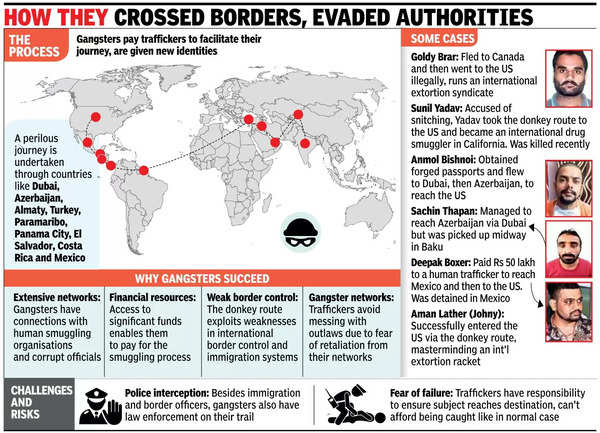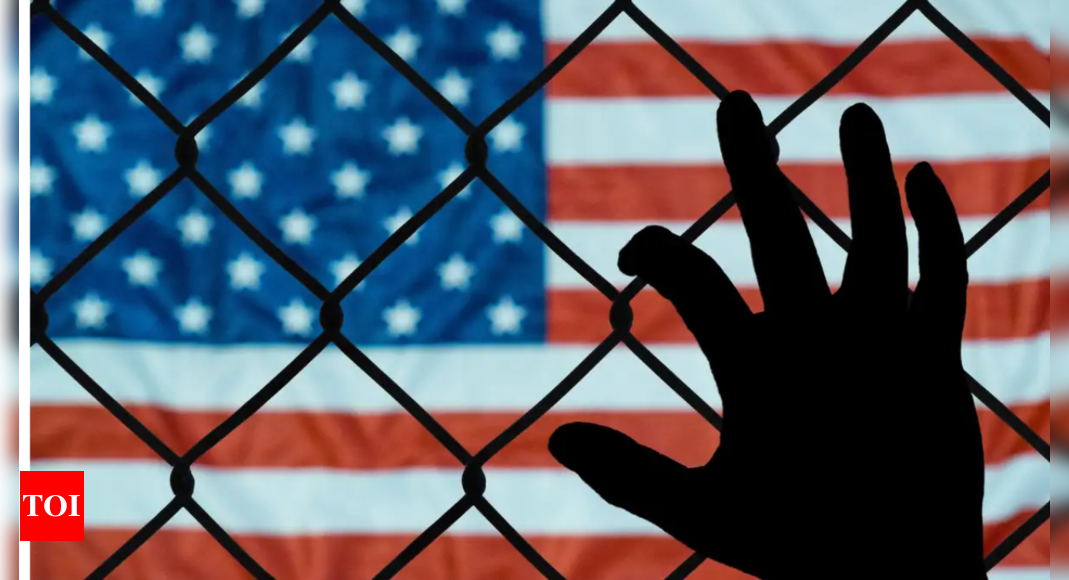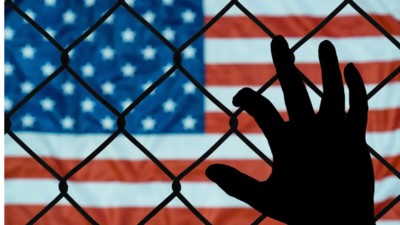NEW DELHI: When gangster Sunil Yadav was accused of snitching on a close aide of don Lawrence Bishnoi, the only way out seemed a donkey route to the United States.
Yadav came to Delhi, got a forged passport made in the name of Rahul and set out on a perilous route west that involved passing through Dubai. Once there, Yadav touched new heights as an international drug smuggler with operations spanning many countries, including India.
Yadav was an aspiration for many in his Punjab village until Bishnoi’s men tracked him down in Stockton, California, last month and gunned him down. Yadav, ironically, is not an isolated case. Most success stories on the ‘donkey route’ are about outlaws determined to make it to the United States.

Punjabi pop singer Sidhu Moose Wala was shot dead on May 29, 2022, in Punjab by shooters of the Lawrence Bishnoi gang. A month before the murder, Bishnoi had directed his younger brother Anmol Bishnoi and relative Sachin Thapan to flee the country by obtaining forged passports.
Both came to Delhi and acquired Tatkal passports using forged documents. Thapan’s passport was in the name of Tilak Raj Toteja while Anmol’s bore the name of Bhanu. By the time, their police verification was conducted and negated, the traffickers had flown them to Dubai to embark on a donkey route.
The duo was flown to Azerbaijan. Anmol, being Bishnoi’s younger brother, set off for the US first. Thapan stayed behind to complete some tasks and wait for his turn.
However, Delhi Police tracked him down and brought him back to Delhi. Anmol, however, managed to reach the US and is currently running the gang operations from there with Satinderjeet Singh aka Goldy Brar, who had secured a study visa to Canada in 2019, stayed there for a while and then illegally crossed over to the US two years ago.
The journey of gangster Deepak Pahal aka Boxer is another donkey route case. When police turned the heat on him after a series of murders in Delhi, Boxer paid Rs 50 lakh to a trafficker to get him to the US. Boxer took the trademark route: he flew to Dubai and then got on a month-long journey that took him across Almaty, Turkey, Paramaribo, Panama City, El Salvador and Costa Rica before reaching Cancun in Mexico.
Just as he was about to launch into the last leg of his journey towards his final destination in the US, Delhi Police’s Special Cell tracked him, got him intercepted and then deported back to India.
Aman Lather alias Johny had embarked on a similarly perilous journey to the US in Feb 2023. He travelled for several weeks through different countries, including Guyana and Panama, before making his way to the US.
His successful entry into that country marked the beginning of a new chapter in his life, one that would be marred by his involvement in a complex web of extortion and crime. From the shadows, Johny masterminded an extortion racket, leveraging his connections with notorious gangsters, including Goldy Brar.
He orchestrated a campaign of fear and intimidation, targeting wealthy builders and property dealers in India. Johny’s operatives, Rohit Lather and Ritik Lather, implemented his plans, using tactics that included gunfire and threatening notes, a show that’s still playing.
Why do gangsters and outlaws stand a better chance at survival on a donkey route than ordinary people with an American dream?
The investigators credit the comparative success of the criminals to their extensive networks and resources. “These individuals typically have established connections with human smuggling organisations and corrupt officials, allowing them to obtain fake documents, such as passports and visas, and bypass security checks,” said a senior officer. Additionally, gangsters often have access to significant financial resources, enabling them to pay for the costly and complex smuggling process.
“The donkey route also exploits weaknesses in international border control and immigration systems,” pointed out an immigration officer. “The circuitous nature of this route, involving a number of countries and modes of transportation, makes it challenging for authorities to track and intercept migrants. Furthermore, the use of fake identities and documents, combined with the ability to blend in with legitimate travellers, allows outlaws to avoid detection and successfully enter the US.”
Also, very often, the traffickers make an out of the donkeys. The agents want more money and also need scapegoats. So, the weak and the poor are the ones who are sacrificed. “The traffickers avoid messing with outlaws as they know their gang network can strike at them later,” revealed another investigator.


